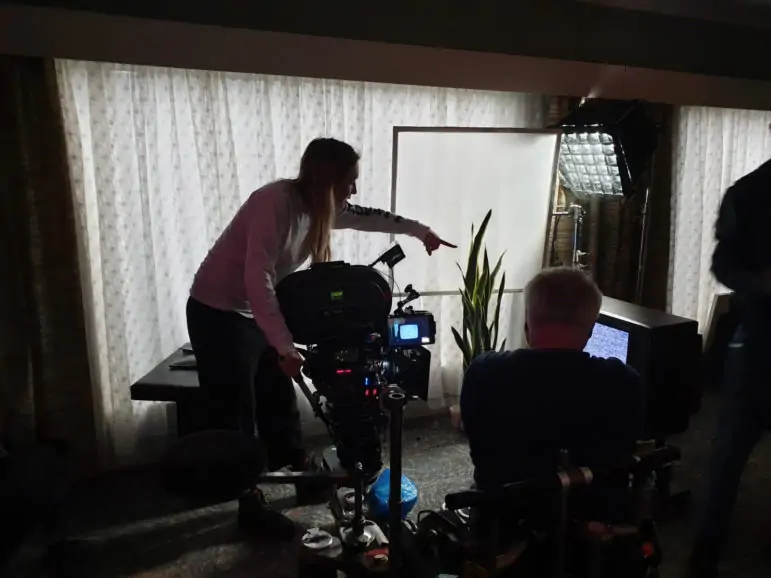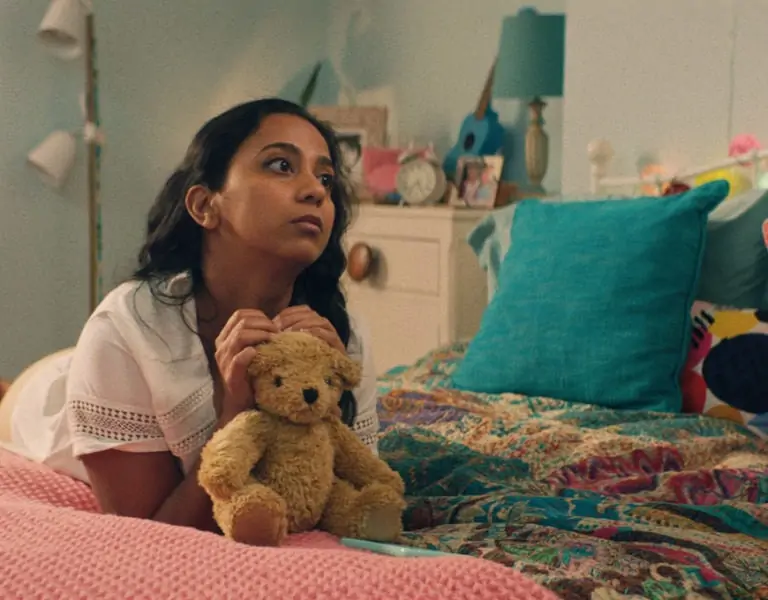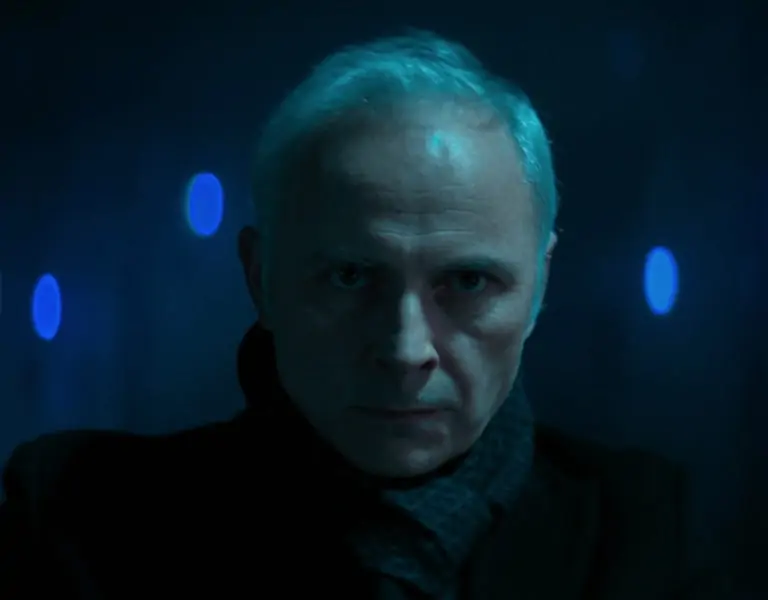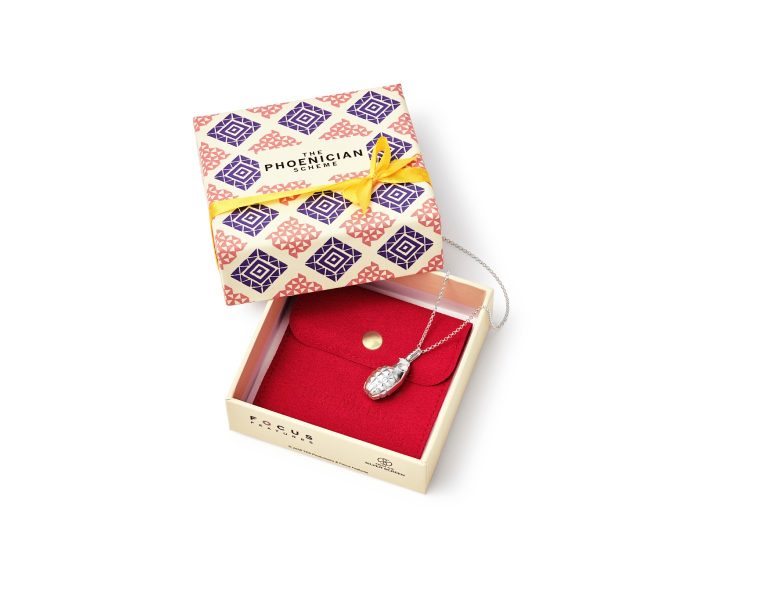FEAR AND FANTASY
Cinematographer Annika Summerson discusses blurring the lines of fiction, reality and memory in Censor, a psychological horror exploring the social hysteria surrounding video nasties in ‘80s Britain.
After meeting on their first day at the London College of Printing, cinematographer Annika Summerson and director Prano Bailey-Bond developed a friendship and collaborated on many shoots, from short films through to music videos. Their 2014 short Nasty was a “calling card” for the pair’s latest production – and Bailey-Bond’s debut feature – psychological horror Censor.
Subscribe to our mailing list to continue reading
Set in 1985 against the backdrop of social hysteria surrounding video nasties in the UK, Censor follows film censor Enid Baines. After witnessing a scene in one of the violent films she is classifying that speaks directly to her sister’s disappearance when they were children, she investigates the film’s director and embarks on a journey that blurs the lines of fiction, reality, and memory.
“I’m fascinated by this period of moral panic in UK history that surrounded horror and I’m also a massive fan of the films that came out of this era, so what’s been really exciting about making Censor is to create the films within the film which are lurid and heightened and have allowed me to play with horror conventions,” says Bailey-Bond. “In making Censor I wanted to create a fun ride that also interrogates our relationship with horror.”
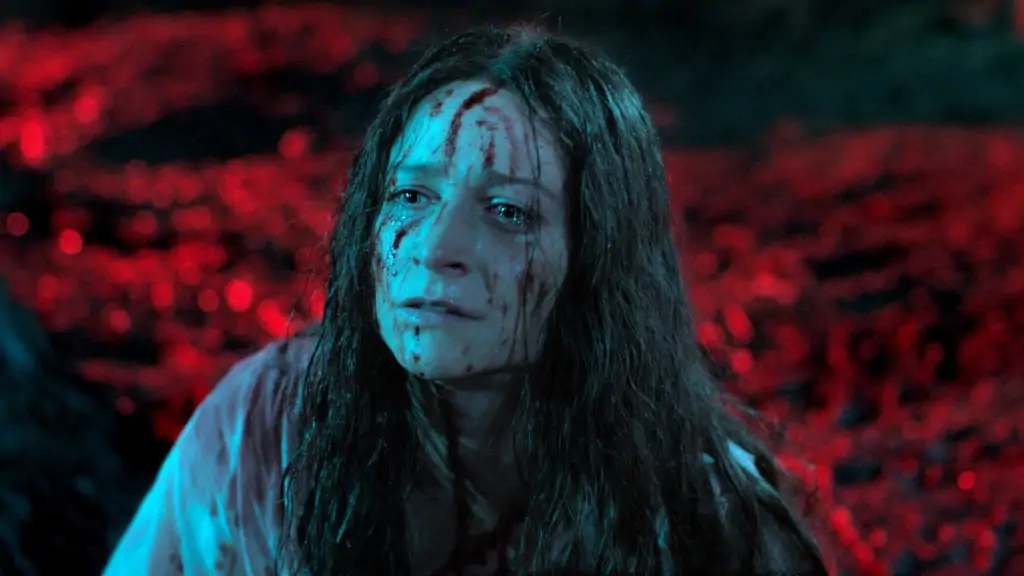
Having been part of the process from the beginning and living with Bailey-Bond during the writing of Censor, Summerson saw the script develop and got to know the character Enid very well. “It’s almost like watching the slow unravelling of an old friend,” she says. “It also made a difference working with your best friend and housemate. It’s easier because you can be totally honest and you know each other well, but it is also harder in a sense since you have no downtime. You live, eat, and breathe the project together.”
As the filmmakers have developed different tastes over the years, their collaborations have become a mixture of their visions. “We don’t always agree how to visualise something, but we discuss and compromise,” says Summerson. On this occasion, she was keen to marry the “bleaker, pessimistic 1980s Thatcher era – rather than the pastel bubble gum ‘80s – with a Dario Argento-inspired palette.”
For inspiration, the pair watched films from the ‘70s and ‘80s such as The Texas Chain Saw Massacre (1974); The Driller Killer (1979); The Evil Dead (1981); Cannibal Holocaust (1980); and I Spit on Your Grave (1978), modern horror films including Mandy (2018) and Suspiria (2018) as well as dramas depicting a character’s slow descent into madness.
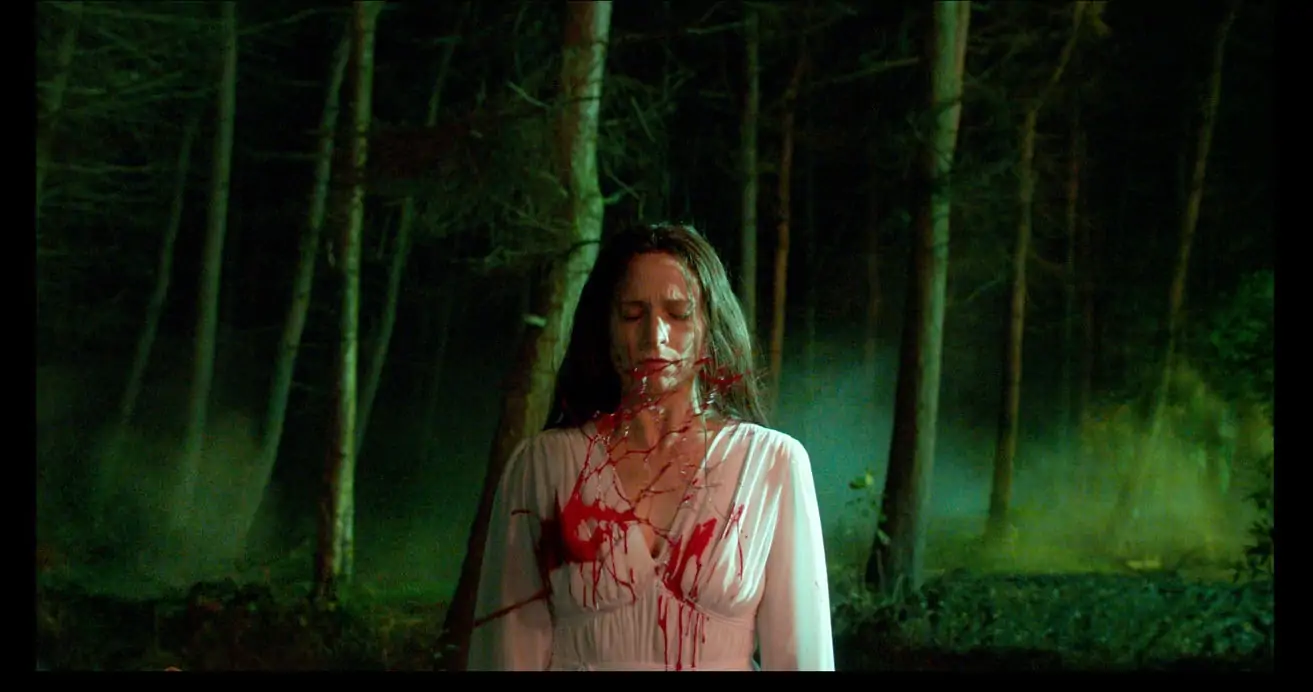
“Although I didn’t live in the UK in the ‘80s, I looked at references and the work of artists who portrayed that decade and mixed that with my view of the UK as a foreigner,” says the Swedish cinematographer. “We also read books on how our memory works and how unreliable it is.”
Although discussions began much earlier, five weeks of official pre-production took place in Leeds before the 25-day shoot commenced in September 2019. Production designer Paulina Rzeszowska built a set inside an old office building in Pudsey outside Leeds which became the Censor’s offices. “We initially wanted more corridors, but it was too expensive, so Paulina came up with a solution where we moved flats around to make it look like we had more corridors,” says Summerson.
All other locations were discovered in and around Leeds, following extensive scouting of tunnels and brutalist buildings while looking for the Censor’s office exterior. “It’s a lot easier to find ‘80s interiors outside London, so we had a better base to start with,” says Summerson.
The most difficult location to source was the forest. “We looked at 15 options to find a space we could shoot it all in that offered easy access and came in on budget and shot at Parkwood Off Road Centre at Home Farm in Tong, Bradford. The cabin in the woods at the end of the film was constructed by Paulina’s team.”
Summerson had fun making some of the video nasties that are screened on televisions and monitors in the film. “Many of the films on the screens at the Censor’s office we shot – including the film Don’t Go in the Church which Enid watches in the viewing theatre – so it was important to make each one feel real which the locations played a part in. There’s a quick shot of Prano in a video nasty that I tried to shoot on an old broadcast camera we found in the attic. It failed us, so I shot it on an iPhone at our home during the first lockdown. We also shot some of the TV news sequences on an old Panasonic M40 camera including the insert about the Amnesiac Killer.”
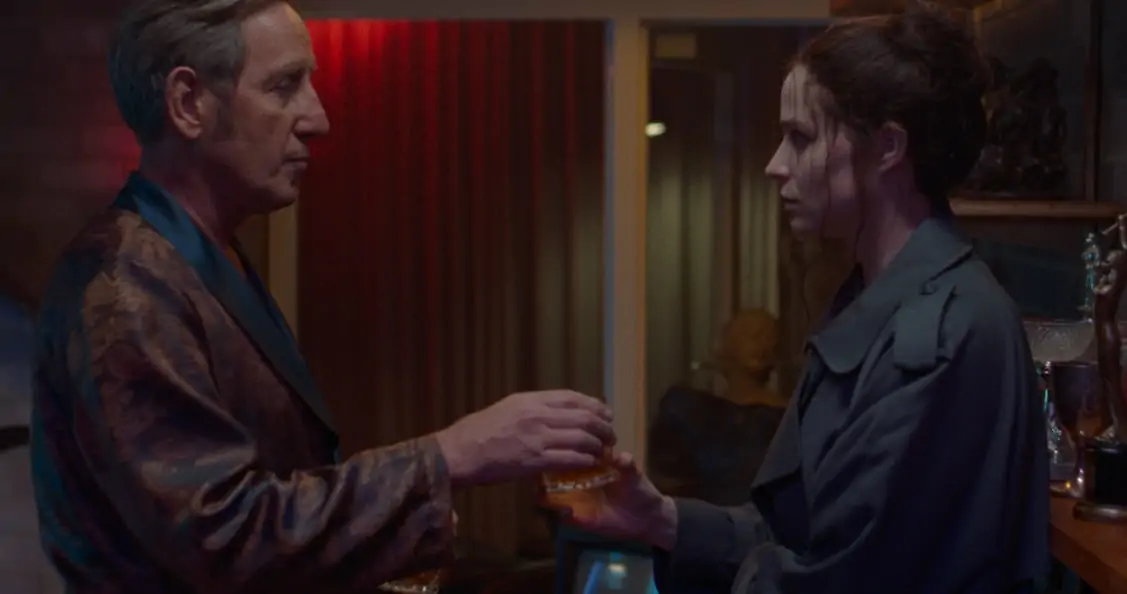
Descending into madness
As their short Nasty was shot on 16mm film, Bailey-Bond and Summerson always intended to shoot Censor on film. “Prano pitched it to be shot on 35mm and that was something we didn’t want to budge on. We were convinced that the added texture of film was right for the period and for all the small films within the film we needed to shoot,” says Summerson.
Tests were shot amongst a group of trees to show the financiers, who green lit the project with the exemption that the night-time forest scenes which required vfx be shot on digital. The filmmakers agreed, using the Sony Venice with a Black Satin filter for those sequences.
Like Nasty, Summerson experimented with aspect ratio changes. “We liked the idea of gradually going towards 4:3 as we slowly descend into the world of video nasties and the line between reality and fiction blurs. It involved a lot of maths when creating the frame lines for each scene, and trust that no scenes would swap around in the edit.”
Having used the camera before and considering it to be a “reliable workhorse”, Summerson chose to shoot with the ARRI Arricam ST, swapping to the LT for Steadicam and handheld work. “I must mention my brilliant grip Sean Kelly, talented and experienced focus puller Jason Wingrove and my long-term Steadicam operator Emilio Schläppi. Jason and Emilio also worked on Nasty with us.”
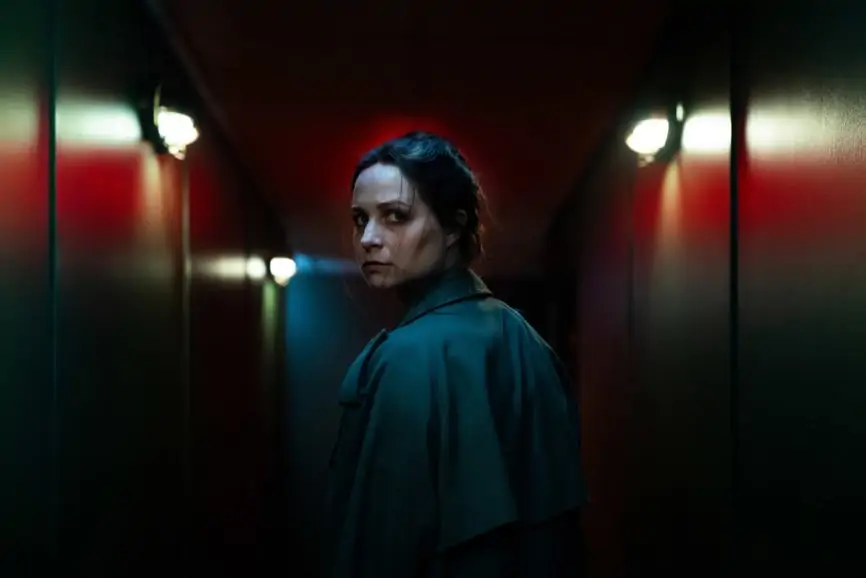
As Bailey-Bond and Summerson wanted Enid’s world to feel static and confined, the camera moved very little in the first act, but as she slowly starts to unravel, movement was introduced until by the end of the film Summerson went full handheld. “We marked out specific scenes when these changes would happen, so we knew where to slowly descend into madness with Enid,” she says.
Most of the film was shot on Kodak VISION3 500T film stock, with some scenes captured on Kodak VISION3 250D. “As we had a lot of interiors and night-time shoots, it was natural to go for the fastest stock and I like the contrast and grain 500T gives you,” says Summerson. “The daytime scenes where we shot 250D was part of fantasy, or memories, so having a different stock helped to form the look. Sam Clark at Kodak also kindly assisted us with short ends and re-cans which helped massively.”
For scenes in which Enid is in the forest, Summerson switched to 8mm. “It’s very dark and grainy, but we wanted that point in the story to have as much grain as we could to further enter the world of film. We also wanted to embrace the darkness.”
Processing was carried out at Cinelab, with dailies graded by Paul Dean. “He was my rock and sent me screengrabs as soon as the rushes came from the lab so I wouldn’t have to sweat and worry while shooting,” says Summerson.
Canon K35 lenses were chosen due to their soft, low contrast look and the vintage feel achieved when used in conjunction with the Kodak 500T film stock. Lenses and all other camera kit were supplied by MovieTech. “Andy Cooper was a champion trying to make this film work on the tiny budget that we had. I owe him and the team at MovieTech a massive thank you,” she says.
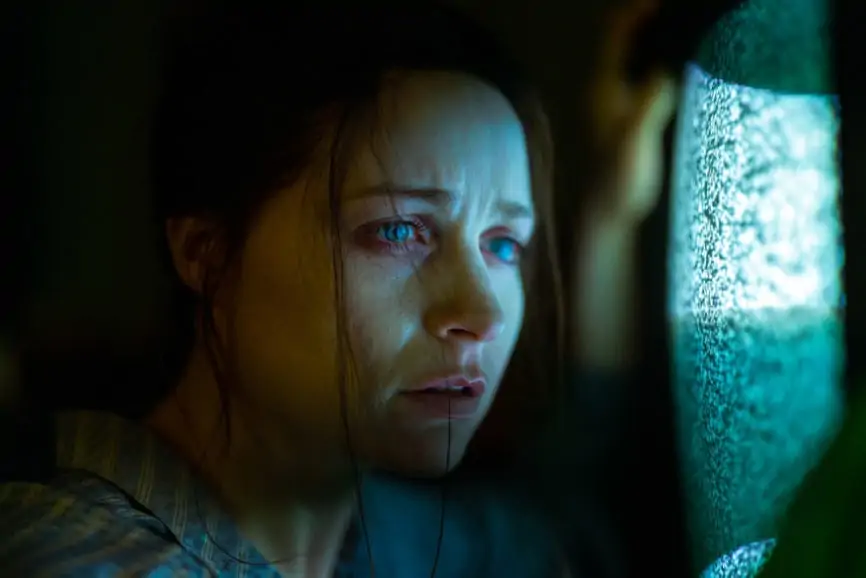
For scenes exploring Enid’s fragmented memories, Summerson used a handheld split diopter in front of the lens and a pearlescent filter to create a hazy distant feel. To create an effect that switches between dream-like and horrific in the final scene, she shot with 250D for both looks, adding an 85 and pearlescent filter for the warmer fantasy shots and using harder lighting to create a more Technicolor feel.
“We locked off the camera and costume designer Saffron Cullane – a regular collaborator on Prano’s projects – changed the costumes between the shots. Paulina added design elements such as colourful flowers to help with the transformation, so it was very much achieved between the departments.”
Certain framing and composition rules were set ahead of shooting such as Enid’s close-ups needing to be cleaner and slightly closer than the other characters. “We wanted to be with her, feel with her and see things from her perspective.”
More is more
The filmmakers also set out to blend the look of a bleak Britain with the colourful world of video nasties in a classic way. “It was a balancing act since we didn’t want it to feel cheap.” The palette used to achieve this comprised muted greens, blues, and greys for the real world before slowly introducing red into Enid’s world. “In the beginning this was only as little details, but as we go on the red becomes more prominent and the lighting in familiar spaces we’ve seen before changes to red,” she says.
A pink/purple colour theme was also used for dreams that are slowly weaved into the storyline. “When we reach the peak in the ravine, we’re going full Argento in terms of colours. Our motto was more is more and we went full out,” she says.
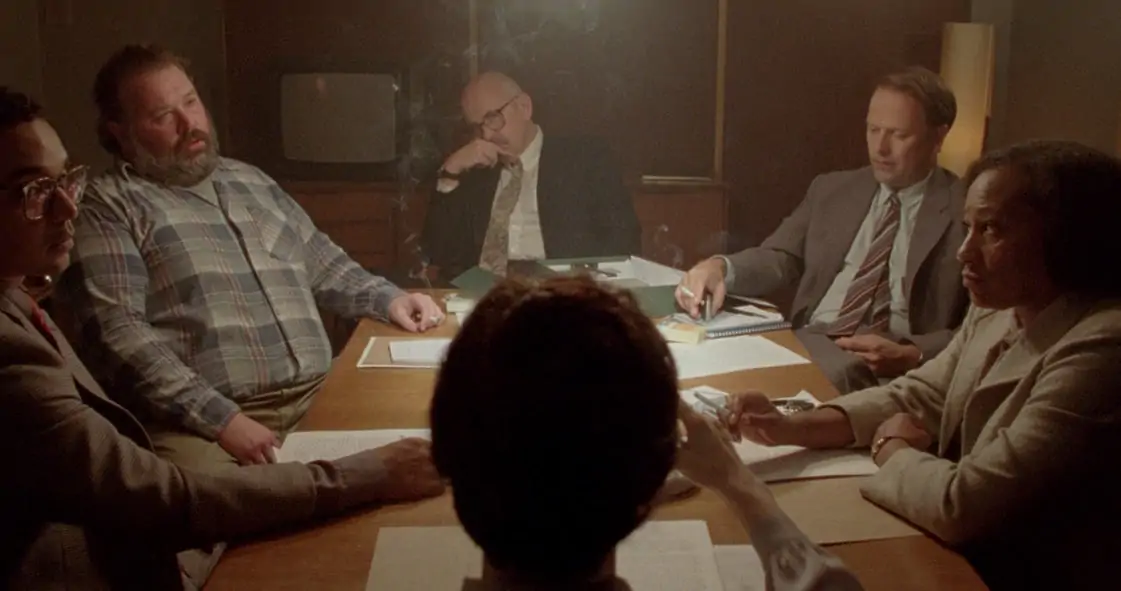
Bond and Summerson had a specific vision and tried to achieve as much as possible in camera. When it came to the grade colourist Vanessa Taylor understood exactly what they wanted quickly. “The three of us sat down together at the start to establish the look and then Vanessa worked her magic. Prano stayed in the grading suite, and I popped in at evenings and weekends because I was shooting another production which had been delayed by the pandemic.”
Helping illuminate the world of Censor was gaffer Elliot Beach, a frequent collaborator of Summerson’s. “He is a creative gaffer and puts everything into every job, so we put a lot of blood, sweat and tears into it together.”
To fit in with the budget 12 1’ x 1’ LED tiles were rented and moved around the set as key light for the office set. “They weren’t RGB or dimmable so we gelled them with predominantly cyan 30 and ND. I never went white in the film and always had a bit of a tint on all lamps, whether it was a blue, green or purple. Elliot was invaluable in making the forest set-up work within the tight schedule and ensuring we could shoot almost 360 degrees. Time is so precious on a low budget shoot, and you want to give the actors the most possible time, so I always try to light for quick turnarounds.”
Shooting a period film on film, during a busy period of the year and on a tight budget and schedule was a test for the whole team, says Summerson. “The most challenging part was filming the scenes in the forest since it was at night, on very hilly terrain and it rained most of the time. There was a yellow storm warning for some nights and the whole forest was like a giant mud slide. It was also extremely cold. To be honest, I don’t want to shoot in a forest again for a while.
“Regardless of that, everyone worked so hard with a lot of passion and optimism. Indie filmmaking sometimes makes you want to tear your hair out, but you also have a lot of creative challenges that ultimately make you grow, and you always remember the shoot fondly after a while, no matter how hard it was.”
